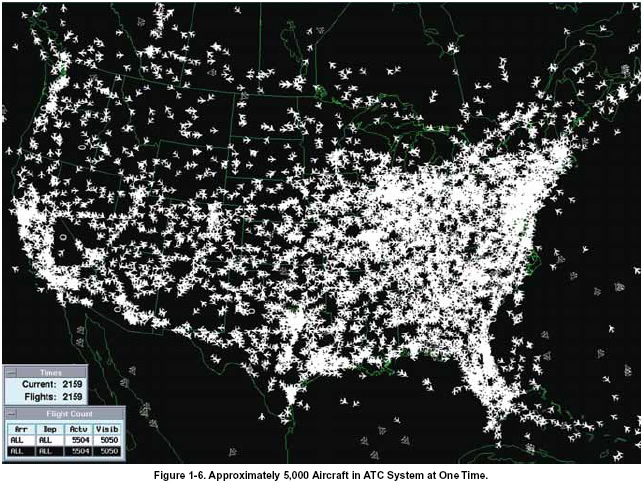 |
|
| INSTRUMENT PROCEDURES HANDBOOK |
|
RUNWAY INCURSION STATISTICS While it is difficult to eliminate runway incursions, technology offers the means for both controllers and flight crews to create situational awareness of runway incursions in sufficient time to prevent accidents. Consequently, the FAA is taking actions that will identify and implement technology solutions, in conjunction with training and procedural evaluation and changes, to reduce runway accidents. Recently established programs that address runway incursions center on identifying the potential severity of an incursion and reducing the likelihood of incursions through training, technology, communications, procedures, airport signs/marking/lighting, data analysis, and developing local solutions. The FAA’s initiatives include:
Statistics compiled for 2004 show that there were 310 runway incursions, down from 332 in 2003. The number of Category A and Category B runway incursions, in which there is significant potential for collision, declined steadily from 2000 through 2003. There were less than half as many such events in 2003 as in 2000. The number of Category A incursions, in which separation decreases and participants take extreme action to narrowly avoid a collision, or in which a collision occurs, dropped to 10 per year. SYSTEM CAPACITY On the user side, there are more than 740,000 active pilots operating over 319,000 commercial, regional, general aviation, and military aircraft. This results in more than 49,500 flights per day. Figure 1-6 depicts over 5,000 aircraft operating at the same time in the U.S. shown on this Air Traffic Control System Command Center (ATCSCC) screen. TAKEOFFS AND LANDINGS According to the FAA Administrator’s Fact Book for March 2005, there were 46,873,000 operations at airports with FAA control towers, an average of more than 128,000 aircraft operations per day. These figures do not include the tens of millions of operations at airports that do not have a control tower. User demands on the NAS are quickly exceeding the ability of current resources to fulfill them. Delays in the NAS for 2004 were slightly higher than in 2000, with a total of 455,786 delays of at least 15 minutes in 2004, compared to 450,289 in 2000. These illustrations of the increasing demands on the NAS indicate that current FAA modernization efforts are well justified. Nothing short of the integrated, systematic, cooperative, and comprehensive approach spelled out by the OEP can bring the NAS to the safety and efficiency standards that the flying public demands. AIR TRAFFIC CONTROL SYSTEM COMMAND CENTER The task of managing the flow of air traffic within the NAS is assigned to the Air Traffic Control System Command Center (ATCSCC). Headquartered in Herndon, Virginia, the ATCSCC has been operational since 1994 and is located in one of the largest and most sophisticated facilities of its kind. The ATCSCC regulates air traffic at a national level when weather, equipment, runway closures, or other conditions place stress on the NAS. In these instances, traffic management specialists at the ATCSCC take action to modify traffic demands in order to remain within system capacity. They accomplish this in cooperation with:
Efforts of the ATCSCC help minimize delays and congestion and maximize the overall use of the NAS, thereby ensuring safe and efficient air travel within the U.S. For example, if severe weather, military operations, runway closures, special events, or other factors affect air traffic for a particular region or airport, the ATCSCC mobilizes its resources and various agency personnel to analyze, coordinate, and reroute (if necessary) traffic to foster maximum efficiency and utilization of the NAS. The ATCSCC directs the operation of the traffic management (TM) system to provide a safe, orderly, and expeditious flow of traffic while minimizing delays. TM is apportioned into traffic management units (TMUs), which monitor and balance traffic flows within their areas of responsibility in accordance with TM directives. TMUs help to ensure system efficiency and effectiveness without compromising safety, by providing the ATCSCC with advance notice of planned outages and runway closures that will impact the air traffic system, such as NAVAID and radar shutdowns, runway closures, equipment and computer malfunctions, and procedural changes. [Figure 1-7 on page 1-8] |
HOME LATEST NEWS - BOOKS YOU CAN READ ONLINE EDITORIALS AVIATION HISTORY
